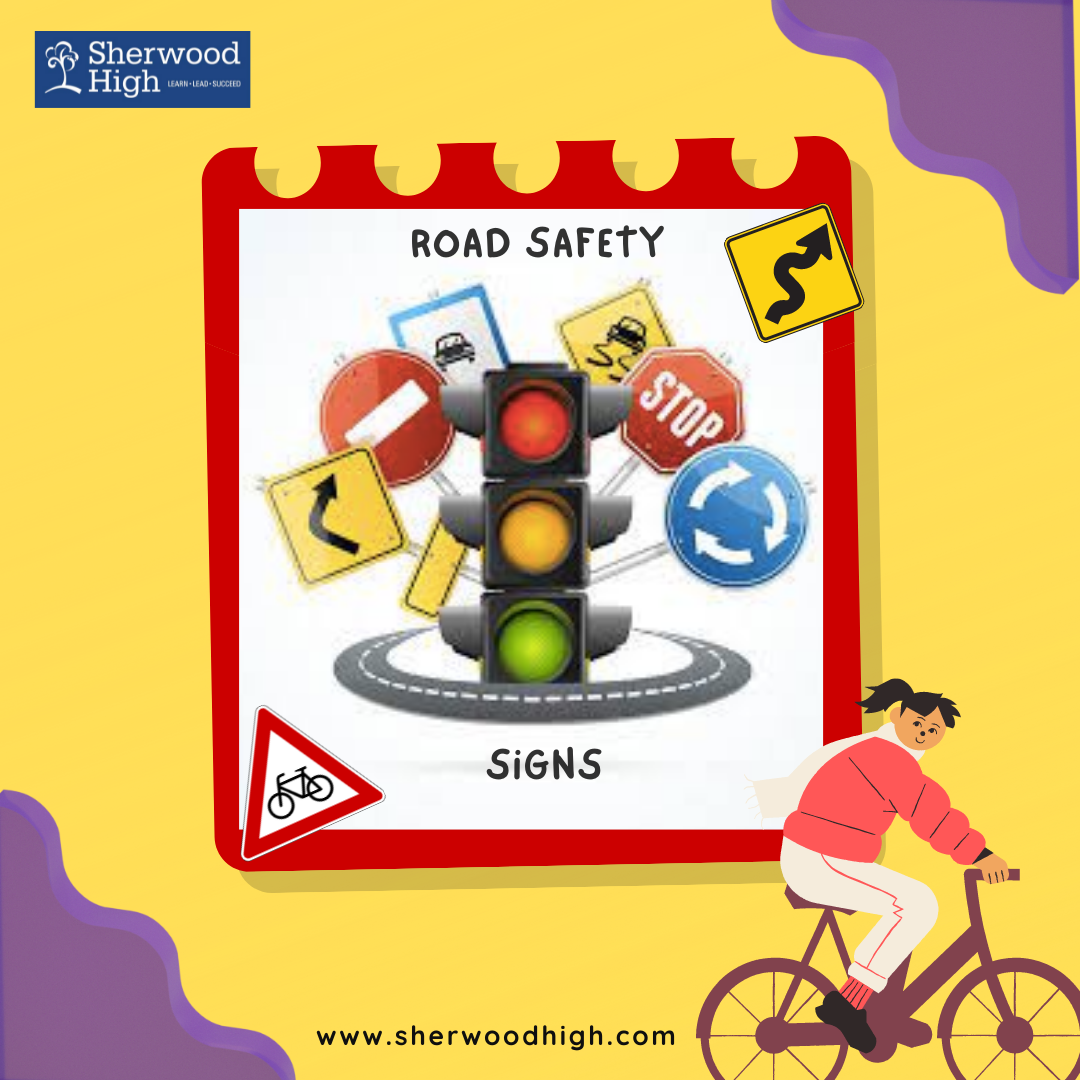

Importance of Road Safety Awareness for children.
Importance of Road Safety Awareness for children.
India ranks among the highest when it comes to the number of accidents happening on the road. There has been significant improvement seen in this area during these recent years, however with the rapid increase in the number of vehicles on the road and the traffic conditions being under a lot of pressure, road safety is one of the most serious public issues in our country right now.
Injuries and deaths because of road traffic accidents have a terrible impact on individuals, communities, and countries. From a pedestrian to a person riding a cycle or a bike or a person driving a car or a lorry, this issue affects everybody. Accidents and road traffic injuries involve massive cost to people and overburden the healthcare systems, which results in significant losses of productivity and prosperity with a deeper social and economic impact.
Therefore, we believe that road safety is a subject of importance that we should teach our children as they grow, right from an early age.
So what does road safety mean?
According to the Cambridge English dictionary “Road safety is teaching people how to behave safely by driving or crossing the road.”
Road safety refers to the measures and methods aimed at reducing the likelihood or the risks of people using the road getting involved in an accident or injury that may cause serious health concerns, death or property damage.
So the set of practises which identify issues pertaining to road traffic problems and other aspects that contribute to accidents or injuries, and adequate measures by common people and law to avoid deaths and injuries due to accidents through educating drivers and pedestrians regarding responsible road sharing and protection of vulnerable road users, etc are all aspects that come under road safety.
Why is it important to teach about road safety to children?


Children in their early years need assistance from adults for every smallest task that has a considerable risk associated with, such as using the roads. Children are unaware of detecting the presence of traffic or judging the speed and distance of vehicles or appropriate time to cross the road, despite some children being aware of the signals and zebra crossings.
As children grow and develop, they become increasingly aware of how they can be safe and manage their own safety while using the roads. It is our duty as parents, teachers, and caregivers, to educate our children about real traffic environments along with adult supervision to help them learn about roads, signals, traffic, risks involved and how they can use the roads safely.
Every child should grow up with the knowledge of road safety, as it is a subject of great importance in everybody’s life. The use of shared roads has a lot of dangers and possibilities of injuries which impacts everybody and is therefore a vital topic of discussion for everyone. While the common people face crashes, injuries and even death, among them the majority are youngsters these days, the risk is higher for children as they reach their teenage years. With newfound independence, young drivers or riders carry a substantial risk not only for themselves but also for other people using the roads, especially pedestrians and cyclists.


Young children have to be given activities, and should be taught about lessons on road safety as this awareness is needed for them more importantly than we may think. Young children are the most vulnerable users of the road and are the most lamentable victims in road accidents because of lack of awareness.
Therefore, educating children about safety measures to be taken while using the roads is a crucial task, as teaching our children road safety means ensuring the safety of the future generation. As an article published in The Hindu rightly stated that “A child who learns about traffic rules and road discipline will grow up to be a law-abiding citizen. The habit of obeying traffic rules teaches a person a sense of responsibility, empathy for others and respecting the other person’s rights”.
At Sherwood High, we believe that awareness starts at home and parents are the first teachers who guide their children through various road traffic rules and regulations before anyone else. So, in order to raise children who are prudently aware of basic safety habits, you need to teach and coach them in a manner that will make your children understand the importance of road safety as well as how to navigate in the roads safely. By teaching our children road safety awareness, we enable them to ensure their own safety without the support of adults or elders.
How do we teach road safety awareness to children?
1. Age appropriate teaching:


Teaching our children about road safety awareness is not that simple, as there are some sensitive issues to consider before we start teaching them about the topic. When we speak about children, there are children ranging from young toddlers to preteens and teens, so the teaching or guidelines to teach road safety for all of them cannot be the same.
As in the process of teaching children about road safety, they could be exposed to certain jarring visuals or witness road crashes while we are teaching them about road safety. Think from the child’s perspective and take the required measures to exclude children and certain activities and even discussions regarding death and gruesome injuries and so on.
So while teaching Road safety for children under five, make sure you are always supervising them in traffic situations even if you’re just there to talk or show them the traffic environment. At all points, hold your children’s hand when you’re crossing roads or even when you’re near cars or other vehicles and explain the importance of hand holding to your children.
When you are crossing the road together, explain to your children why it is important to use the zebra crossing, and also involve your children in deciding when and where it is safe to cross the road. Answer their questions patiently and help them think rationally in the traffic environment. Always model responsible behavior to your toddlers by wearing your own seatbelt and always obeying road rules while driving courteously and crossing the roads only during signals. You can also teach your children why it is unsafe to play in the areas around driveways and to help them choose play areas that are away from driveways.
Children who are above five years but are below ten years, still need adult supervision and help in the traffic environment. However, if you have begun early and your children are in the know-how about the road safety rules, talk together about signs and traffic lights, teach them how to identify the lights and discuss where it is safe to cross the road et cetera.
Every time you cross roads with your children, teach them to look at both sides or to use the ‘stop, look, listen, and think’ process and then decide whether or not it is safe to cross the road. Wherever there are footpaths available and zebra crossings and pedestrian crossings available, make sure you use them and walk on straight sections of road wherever possible. When your children have lessons and are taught about road safety programmes at school, make sure you involve yourself in their lessons and further teach them and instill road safety awareness in them.
Preteens and teens can cope more safely in traffic on their own, yet it is important to make sure you tell them the rules and re-emphasise safety instructions consistently. Make sure your child still follows and looks both ways before crossing roads. Ask them to explain the safety measures they take when they travel alone once they are back home. Talk to children about road laws while you teach them to ride a bicycle and go for regular rides along with your children to make sure you see how they navigate the main roads. You can also show your children the safest route to go to schools and other places your children often visit.
2. Make learning fun:


In order to teach children efficiently, we need to transform learning into an amusing and interactive activity. Because when we teach children about something with only data and theory, they can be swiftly distracted without any specific reason and will not be engaged in the lesson anymore.
You can come up with certain techniques to follow while teaching them road safety awareness to keep them interested such as creating a map together of your child’s everyday route, street names, relevant landmarks, and shops which your children usually visit and teach them about safety using the map.
You can play games such as quizzes wherever you go out for a walk with your children and enquire about how to take a certain route to the store or what safety rules they follow related to crosswalks and intersections and assist children to decipher the relevance of road signals in a fun manner.
3. Practical learning:


Like we previously said, learning only in theory does not help imbibe the kind of effect that demonstrations can have on children. So every time you have an opportunity, choose to go on a walk with your children and demonstrate the rules of crossing the roads and maintaining a specific distance between vehicles and to make sure you do not wear your headphones while you are driving in order to listen whether or not a vehicle is approaching you, and so on.
Always choose sidewalks which are away from the main roads and walk toward oncoming traffic in a way that you can have a clear view of the vehicles approaching you. Emphasize to your children that sidewalks are only for walking and never to ride their bikes/ bicycles on the sidewalks.
Do not entertain jaywalking when you are with your children and always follow the safety rules while you are driving or riding your vehicle. Always drive at a speed that is permitted during school hours and remain vigilant as your children are observing how you drive. Never get angry or throw a fit or have road rage while you are with your children and demonstrate ample patience while you are in a traffic environment.
Practically demonstrate how children should get down and climb up in vehicles such as cars and bikes safely and highlight the importance of never obstructing car doors as it can cause them to not see an approaching vehicle. Teach them that alighting from a vehicle should always be done towards the side of the footpath and away from the traffic.
If your children take buses frequently, take the school bus or the regular buses with your children, at least for the initial couple of days. While you are with them, monitor how they behave and teach them the risks of moving around in the bus as it can lead to falling when there are sudden brakes. Always warn your children against standing near the doors of moving buses and to not move around the aisle of a moving bus.
Summing up:


Always remember that children imitate the activities of the people they see, especially their parents and caregivers. If they see you being bad at road safety, it would affect them as well. Therefore, always drive safely and follow all the traffic rules and involve your children in awareness campaigns related to road safety and so on. As children are a product of their environment, as they see adults who respect traffic rules, it will emphasize its importance to them and have a positive influence on younger children. Whether it is imbibing the concept of traffic rules, or signals, or general safety behavior while using shared roads, or safe pedestrian behavior, children need to be taught about responsibility towards their personal safety.
It is also important to use the right language while teaching road safety to children. Irrespective of age, children need to be taught about the effects of road safety, but to what extent you want to involve or exclude your children according to their age is your prerogative as you understand your children the best.






